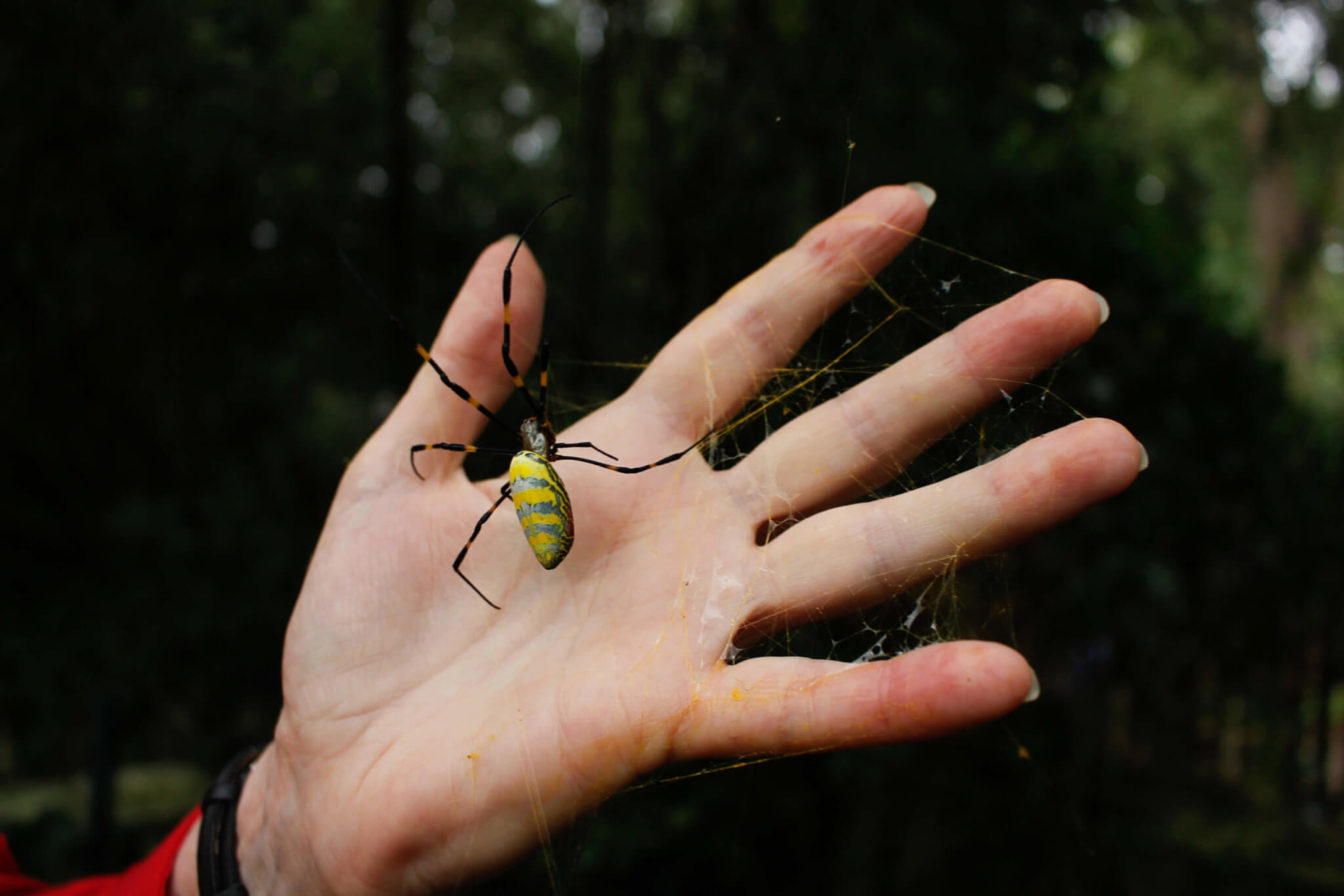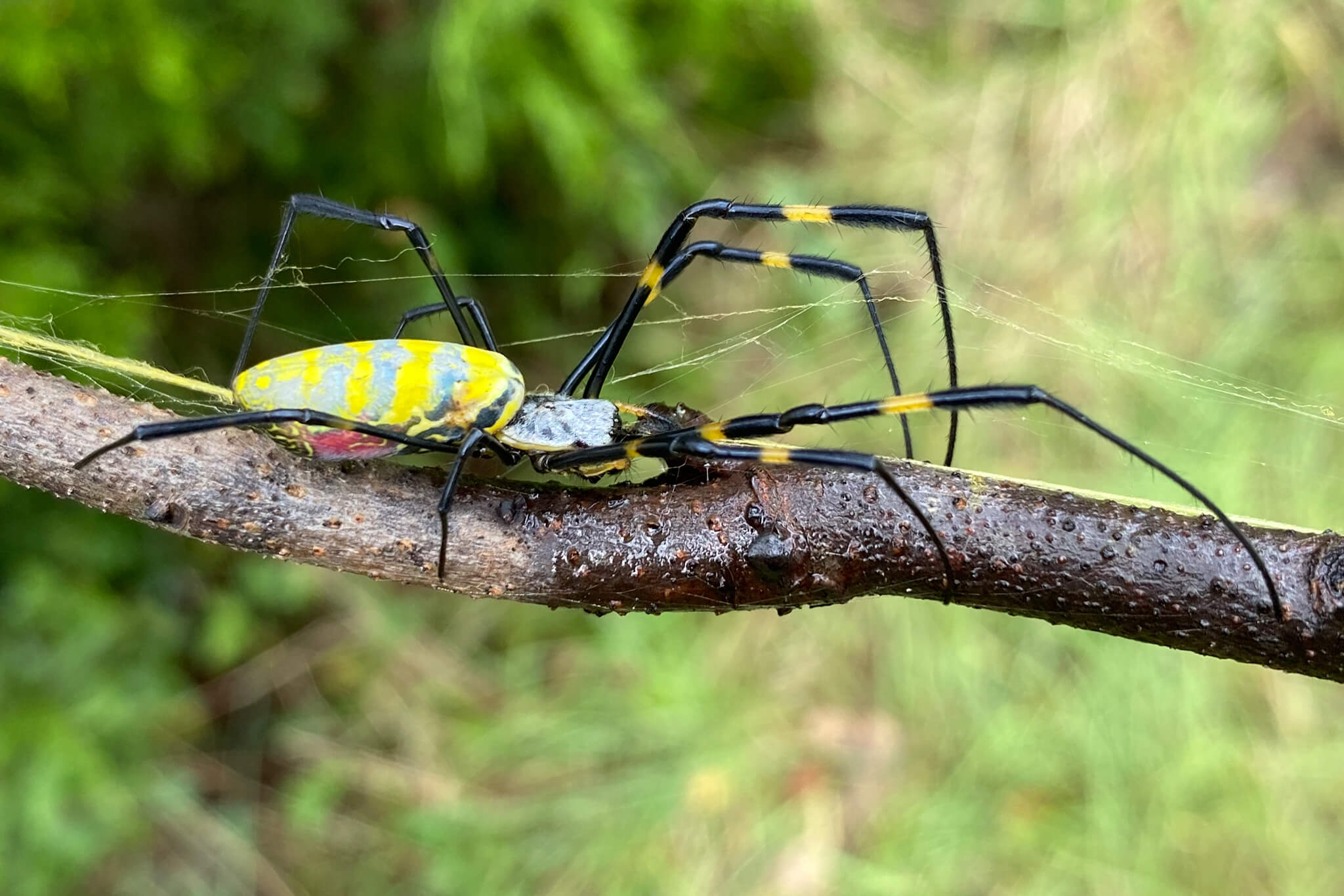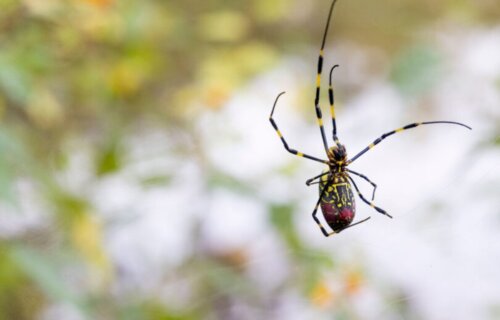ATHENS, Ga. — Known for their vibrant colors and large size, Joro spiders can appear quite intimidating. This invasive species of spider is currently spreading all over the Southeastern United States, but researchers from the University of Georgia suggest these arachnids are actually rather shy and mean people no harm. Study authors believe the Joro spider may be the shyest spider ever documented — and this personality quirk is actually aiding in their survival and proliferation.
“One of the ways that people think this spider could be affecting other species is that it’s aggressive and out-competing all the other native spiders,” says Andy Davis, lead author of the study and a research scientist in UGA’s Odum School of Ecology, in a university release. “So we wanted to get to know the personality of these spiders and see if they’re capable of being that aggressive. It turns out they’re not.”
The research team analyzed and compared over 450 spiders’ reactions to a brief and harmless disturbance across 10 distinct species. While most spiders froze for less than a minute before getting back to what they were doing, the Joro spiders remained motionless for more than an hour.
“They basically shut down and wait for the disturbance to go away,” Davis explains. “Our paper shows that these spiders are really more afraid of you than the reverse.”
Moreover, researchers believe Joros are relatively harmless to both people and pets. These spiders won’t bite unless cornered and faced with no other option. Even if you did manage to somehow annoy a Joro into biting you, its fangs are barely large enough to pierce skin.
To conduct this research, the team used a turkey baster to gently blow two rapid puffs of air onto the spiders, one at a time. This minor disturbance caused all the spiders to “freeze” for a period of time, remaining totally motionless.

The team tested over 30 garden spiders, banded garden spiders, and marbled orb weavers. They also analyzed similar data gathered from earlier, published, peer-reviewed papers that assessed responses among 389 more spiders and five additional species. Again, all of those spiders started moving after about a minute-and-a-half of remaining still.
The Joros, on the other hand, remained totally frozen (no body or leg movement at all) for over an hour in most cases. The only other spider species that exhibited a similarly extended response time was the Joro spider’s cousin, the golden silk spider. Called Trichonephila clavipes, the golden silk spider and the Joro are from the same genus.
Officially referred to as Trichonephila clavata, the East Asian Joro spider first arrived in the state of Georgia just a decade ago, around 2013. The species is originally native to Japan, Korea, Taiwan, and China, and likely hitched a ride to the United States in shipping containers. Since then, the species has spread rapidly across Georgia and most of the Southeast. There are easily millions of Joro spiders stateside today and experts say there is little anyone can do to slow their spread. Davis’s previous research even suggests these invasive arachnids may spread beyond their current habitats and expand throughout most of the Eastern Seaboard.
“Most people think ‘invasive’ and ‘aggressive’ are synonymous,” notes Amitesh Anerao, co-author of the study and an undergraduate researcher at the university. “People were freaking out about the Joro spiders at first, but maybe this paper can help calm people down.”

Today, Joros are often seen in areas native Georgia spiders don’t typically inhabit. They’re known to build their golden webs between power lines, on top of stoplights, and even above the pumps at local gas stations. This is notable because none of those locations are especially peaceful, or calm, spots.
Study authors theorize the shyness of the Joro actually helps it deal with the noises, vibrations, and visual stimuli that are unavoidable across urban settings. Their tendency to freeze up for long periods probably helps the spiders conserve energy.
So what led to their rapid spread across the Southeast?
“One thing this paper tells me is that the Joros’ rapid spread must be because of their incredible reproductive potential,” Davis theorizes. “They’re simply outbreeding everybody else. It’s not because they’re displacing native spiders or kicking them out of their own webs.”
All in all, researchers hope this work helps put some people at ease the next time they spot a Joro spider – as it certainly doesn’t appear they’ll be going anywhere anytime soon.
“They’re so good at living with humans,” Anerao concludes, “that they’re probably not going away anytime soon.”
The study is published in the journal Arthropoda.


That does not help at all. Eradicate jarro.